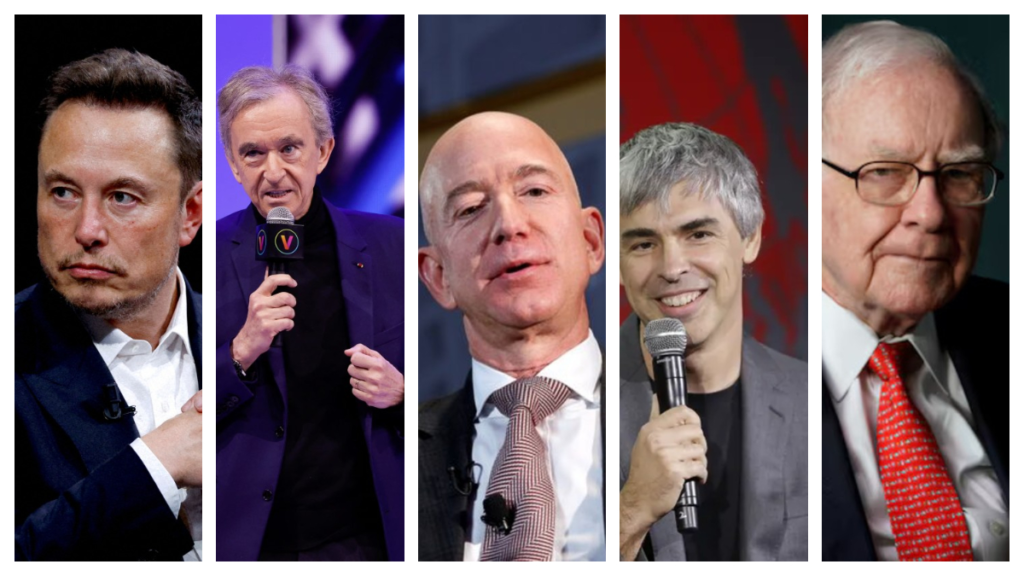The Titans of Wealth: Examining the Forbes Billionaires List 2025 and the Dominance of the United States
The United States: A Bastion of Billionaire Wealth
The annual release of the Forbes Billionaires List serves as a fascinating, if somewhat disquieting, snapshot of global wealth distribution and economic power. The 2025 edition, placing the United States firmly at the top with a staggering 902 billionaires, while India holds its position as third with a notable 205, offers a compelling lens through which to examine the forces shaping the world’s economic landscape. This ranking not only highlights the concentration of immense wealth but also prompts crucial questions about innovation, opportunity, and the societal implications of such disparities.

Drivers of US Billionaire Dominance
The United States’ continued dominance on the Forbes list underscores its enduring position as a hub for innovation, technological advancement, and entrepreneurial dynamism. The sheer number of billionaires emanating from the US reflects a complex interplay of factors. A robust venture capital ecosystem fuels the growth of startups, particularly in the technology sector, which has consistently minted new fortunes. Furthermore, the mature and expansive nature of the American economy, encompassing diverse industries from finance and retail to media and real estate, provides fertile ground for wealth accumulation. The relatively lower barriers to entry for certain industries, coupled with a culture that often celebrates and rewards risk-taking, contributes to the creation and expansion of vast personal fortunes. The presence of numerous global corporations headquartered in the US further solidifies this trend, as their success directly translates into the wealth of their founders, executives, and major shareholders.
India’s Ascendancy in the Billionaire Ranks
In contrast, India’s consistent presence in the top three, with a significant 205 billionaires, speaks to the rapid economic growth and burgeoning entrepreneurial spirit within the country. Despite its vast population and persistent challenges related to poverty and inequality, India has witnessed a remarkable surge in wealth creation over the past few decades. This can be attributed to a combination of factors, including economic liberalization, a thriving technology sector, a large and increasingly affluent consumer market, and the rise of powerful business conglomerates. The Indian billionaire class often draws its wealth from diverse sectors such as manufacturing, energy, pharmaceuticals, and increasingly, technology and e-commerce. While the number of Indian billionaires is substantial, the significant gap compared to the United States highlights the differing scales of their economies and the varying levels of wealth concentration.
Socio-Economic Contexts and Philanthropic Endeavors
The comparison between the US and India on the Forbes list also brings to the forefront the contrasting socio-economic contexts in which this wealth is generated and held. In the United States, while the concentration of wealth is a subject of ongoing debate regarding income inequality and social mobility, there is also a strong tradition of philanthropy and significant charitable giving by many of its wealthiest individuals. Foundations established by American billionaires have played a crucial role in funding research, education, and social welfare initiatives globally. In India, philanthropy is also on the rise, with many business leaders increasingly engaging in charitable activities. However, the sheer scale of poverty and the developmental challenges facing India mean that the impact of billionaire philanthropy, while significant, operates within a different context.
Reflections of Economic Strengths and Trajectories
Moreover, the composition of wealth within each country often reflects their respective economic strengths and historical trajectories. The dominance of technology and finance billionaires in the US list underscores its leadership in these cutting-edge sectors. In India, while technology is a growing contributor, traditional industries and family-owned conglomerates still play a significant role in the wealth landscape. This difference highlights the evolving nature of wealth creation in a globalized world, where innovation and technological disruption are increasingly key drivers.
The Forbes List as a Barometer of Global Economic Trends
The Forbes Billionaires List, therefore, is more than just a ranking of the world’s wealthiest individuals. It serves as a powerful indicator of global economic trends, the dynamism of different national economies, and the varying pathways to wealth accumulation. The United States’ continued leadership, alongside India’s strong presence in the top tier, paints a picture of a global economy characterized by both established powerhouses and rapidly emerging forces. As we look ahead, the evolution of this list will continue to offer valuable insights into the shifting landscape of global wealth and its profound implications for societies worldwide. The concentration of such immense financial power inevitably sparks discussions about its ethical dimensions, its impact on political systems, and the responsibility that comes with such vast fortunes in addressing global challenges.










